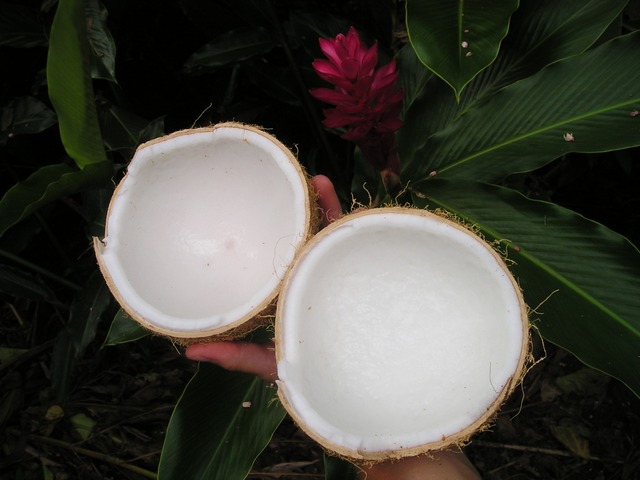Kava kava (or, simply, kava) is a plant in the pepper family that is gaining a lot of popularity recently. Many people have started using kava as a remedy for several issues, but also as an alternative to kratom. In this post, you will learn some facts you need to know about kava kava. We will show you the uses and effects, the dosage, and the side effects. But also, some facts about the history and distribution of this plant.
The scientific name of kava is Piper methysticum, which means “intoxicating pepper”. Kava grows naturally in islands of the South Pacific, such as the Fiji Islands, Tonga, the Samoan Islands, Hawaii, Polynesia… The word “kava” means “bitter” in the Polynesian Marquesan dialect. For many centuries, kava has been a part of the traditional culture in these islands.
Traditional Uses of Kava Kava
Indigenous people from the South Pacific prepared a kava beverage that they used for ceremonies and rituals, which they served in a coconut shell. But kava was also part of their social life, and people consumed it to create social bonds, settle conflicts, or even for recreational purposes. Even today, you can still find kava in local markets.
In other places, such as Papua New Guinea, kava is used only for medical purposes, but not as a recreational substance.
Kava is still a very important part of the local economy in some of these places, such as Fiji, Samoa, Tonga, or Vanuatu. Furthermore, in these regions, kava is a sustainable crop, which also suits the native culture and traditions.
Nowadays, kava kava has become very popular in America and you can even find kava bars in many US cities.
Active Elements of Kava Kava
The main active elements in kava are the kavalactones. The kavalactones are found mainly in the roots, which are the parts of the kava plant most commonly used. There are several studies that prove the properties of kavalactones, such as sedative, relaxing, anti-convulsive, or pain-relieving.
Although kava has 18 kavalactones, most of its pharmacological activity comes from only 6 of them:
- Kavain
- Dihydrokavain
- Methysticin
- Dihydromethysticin
- Yangonin
- Esmethoxyyangonin
The properties of these compounds include:
- Potentiate the GABA-A receptor activity
- Inhibit the reuptake of norepinephrine and dopamine
- Bind to the CB1 (cannabinoid type 1) receptor
- Inhibit the monoamine oxidase B (MAOB) enzyme
- Inhibit the sodium and calcium voltage-gated channels
All this sounds very impressive, but what does it mean? Well, basically that kava affects your brain and other parts of your nervous system. Due to that, kava can be very useful if you have mental issues, such as anxiety or depression. But also, you must be very careful when using kava, especially if you are taking other substances that act upon your nervous system.
Uses and Effects of Kava
Because of the action of the kavalactones, you can use kava for:
Anxiety and depression
Kava kava is a natural remedy for these conditions. To such an extent, that it is often compared to prescription anxiolytics and antidepressants. It is also excellent to stop panic attacks.
Relaxation and Stress
Kava will help you achieve a very nice feeling of relaxation. If you are under a lot of pressure or stress, kava relaxing effects will provide you with the calm you need. Also, The soothing properties of kava will help you relax your muscles. Either if you are muscles are tight due to stress or to physical exercise, kava kava will ease the tension.
Opiate withdrawal
Many people find kava a good ally in fighting the symptoms of opiate withdrawal. Kava can alleviate the anxiety and stress provoked by opiate withdrawal. At the same time, kava increases the dopamine levels associated with lethargy and low mood.
Moreover, kava’s sedative properties will help you sleep if you are suffering from insomnia. And finally, kava also has antioxidant properties and there is scientific research focused on its potential efficacy in preventing cancer.

Dosage of Kava Kava
The FDA recommends not to consume more than 290 mg of kava per day. And most kava vendors recommend a maximum daily dosage of 300 mg.
Having said that, many users find this dosage too low and their daily doses linger between 500 mg and 2 g.
If you are new to kava, it is better to start with a conservative approach and follow the indications provided by the vendors.
Kava Side Effects
Kava might be harmful to your liver. In fact, that is one of the reasons why kava kava remains illegal in the United Kingdom. Whether the ban can be a bit of an overreaction or not, you should still be cautious when using kava and do not consume it if you have any liver condition.
Other minor side effects are:
- Stomach upset
- Dehydration
- Constipation
- Dry skin and dry eyes
- Dizziness
Also, kava could slow down your reaction time. Therefore (and because of its sedative properties), you should not drive or operate any machinery if you are under the effects of kava kava.
Kava can also interact with other substances or drugs, especially SSRIs, antidepressants, or anxiolytics. You can check here the list of drugs that interact with kava.
How to Take Kava
The kava kava preparations you can find are usually made from the roots. You can find kava powder, extract, capsules, or tinctures. Kava is usually brewed in a tea unless you are taking pills or tincture.
Some people like mixing kava with alcohol because it enhances the qualities of both substances. However, this could increase the risk of liver damage.
Also, kava bars have become very popular, and people go there to enjoy kava drinks and socialize with other users.
Where Can You Buy Kava Kava?
You can find kava in online stores, local natural shops, or even supermarkets like Walmart. Therefore, finding kava will not be a problem. And you can even find kava bars where kava fans gather to enjoy this amazing drink.



